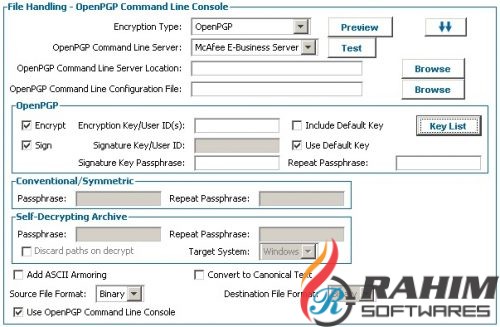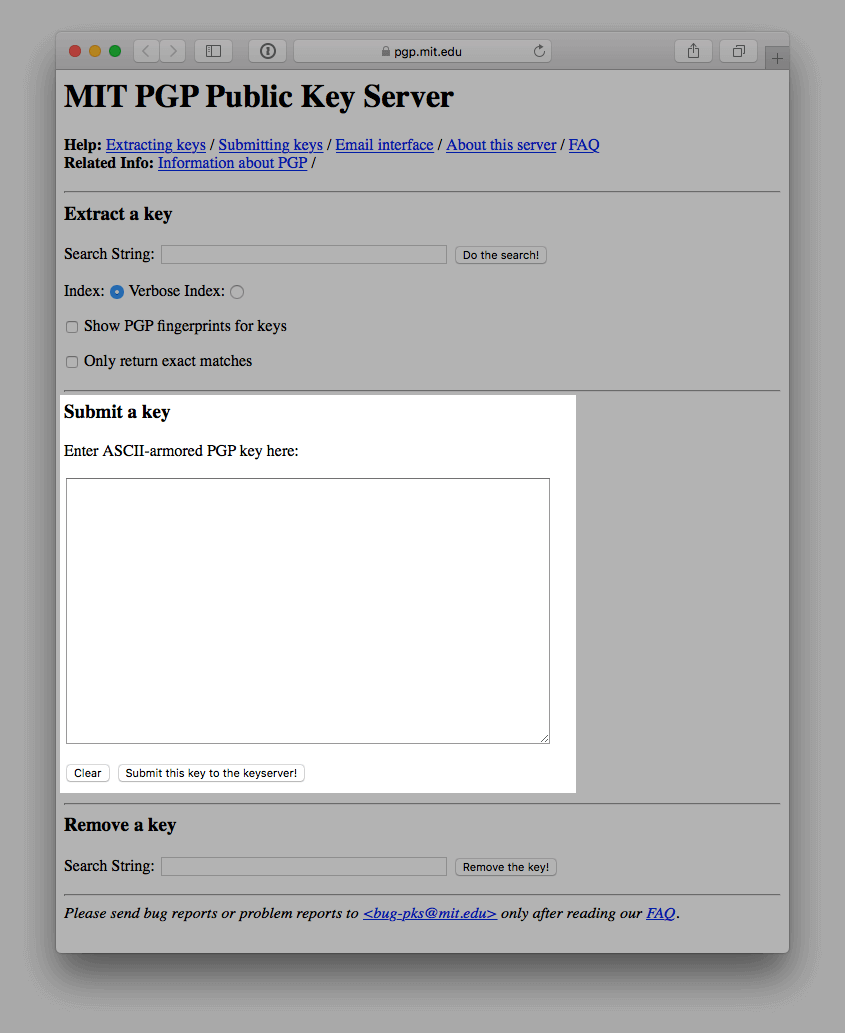
PGP Command Line 10 processes files differently than PGP Command Line version 9.
#PGP COMMAND LINE FOR MAC UPDATE#
To set the previous key back, refer to the PGPprefs.xml file, and inside it, look for the following string and update to the proper Key ID: Important Note: If you have a Default Key set for the current configuration, and then you generate a new PGP key, this will set the newly-generated key as the default. Pgp -decrypt -input "D:\Folder\" -passphrase "Passphrase Removed"įor more info please refer: PGP Command Line Guide Pgp -detached report.txtExample -signer "the signing key" -passphrase "your passphrase here" This signing option can be used with all file types. sig file will be needed to verify the signature. Pgp -clearsign report.txtExample -signer "the signing key" -passphrase "your passphrase here" For example signing an Excel spreadsheet would result in a courrupted file that can no longer be used. The -clearsign option cannot be used with non-text file format. clearsign is only used for regular text documents such as notepad or ASCII format. the -decrypt option can be used without putting in a passphrase. Using the decrypt option would be used to verify the signed file. Pgp -sign report.txtExample -signer "the signing key" -passphrase "your passphrase here" pgp file extension so the file can be decrypted as all signed files are encasulated in the signed file. When using the -sign option remember to include the.

sign is used to sign all file types including binary-based files. These options are very different from one another and they each have their own use cases. There are three main options to perform signing in PGP commandline -sign, -clearsign, and -detached. Pgp -encrypt report.txtExample -recepient public key -sig report.txtExample -signer "ur keyid" -passphrase

Only keys that exactly match this user ID would be exported. If you don’t enter any input, all keys on the keyring are exported.īy default, keys are exported as ASCII armor (.asc) files into the directory currently active on the command line.Īll keys with the string “example” anywhere in them would be exported into separate. output lets you specify a different name for the exported file. – is the user ID, portion of the user ID, or the key ID of the key you want to export. The command -export exports only public keys, while the command -export-key-pair exports private keys. NOTE: You can locate your keyrings using the -version -v command.ģ.

If your passphrase includes spaces, enclose it in quotation marks. is the number of bits of the key (usually 1024 - 4096). means you are creating either an RSA or a DH key. If your user ID contains spaces, you must enclose it in quotation marks. A common user ID is your name and email address in the format: "Alice Cameron ". is a user ID that people can use to locate your public key. Pgp -gen-key "Alice Cameron " -key-type rsa -encryption-bits 2048 -signing-bits 2048 -passphrase cam3r0n -expiration-date Pgp -gen-key -key-type -encryption-bits -passphrase The -gen-key command automatically creates your key pair and a public and a private keyring in the home directory, Use the -gen-key command to create a new key pair.

#PGP COMMAND LINE FOR MAC HOW TO#
How to Generate Keys on the PGP Command Line: See article: HOWTO42089 for more information.Ģ.


 0 kommentar(er)
0 kommentar(er)
